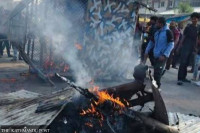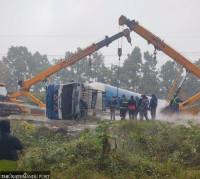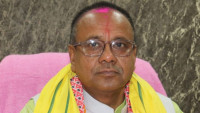Madhesh Province
Province 2 residents most enthusiastic about finding jobs in civil service
Despite lagging in education, more people aspire to join civil service compared to their counterparts in other provinces.
Prithvi Man Shrestha
Residents of Province 2 topped the list of people applying for civil service jobs during the last fiscal year despite the province lagging in human development, particularly in terms of education.
According to the Public Service Commission’s annual report for 2019-20 , 23.57 percent of total applications received by the constitutional body for public service jobs were from residents of Province 2. Province 5 with 17.06 percent was a distant second. Officials and experts believe that this may be a sign that the reservation system in the country is working.
“The biggest factor behind high applications received from province 2 is the large size of the population in the province,” said Umesh Mainali, chairperson of the commission.
According to the 2011 census, the population of Province 2 stands at 5.4 million—largest after Bagmati, which is home to 5.52 million people.
Of the 451,526 applications the commission received during the year, 106,405 came from residents of Province 2, which has been topping the list for quite some time, according to the commission. During the previous fiscal year, 29 percent of total applications were from Province 2.
The biggest pool of applications came from Saptari district followed by Sarlahi, Dhanusa, and Siraha. In fact, seven of the top 10 districts, in terms of the number of applications, are from Province 2. Only two districts outside of Province 2—Gulmi and Syangja— make it to the top 10.
Province is considered one of the most backward regions of the country in terms of human development, according to the Nepal Human Development Report-2020 released by the National Planning Commission and United Nations Development Programme last month.
According to the report, the human development index of the province stood at 0.51—the lowest in Nepal, even behind Karnali.
From the perspective of geography, the Terai region as a whole score the lowest in terms of human development in Nepal compared to the hills and the mountains. “The Terai and Province 2 score the lowest on education, followed by income,” the report says.
Mainali said that due to lack of resources, people don’t have the option of starting their own business, “Another reason is that the region is backward in human development and many people of the province want to join government jobs in the absence of adequate resources to start any businesses,” said Mainali.
He believes that the availability of quotas for residents of Province 2 might have fuelled their aspirations to work government jobs. “The aspiration to join the government service was also fueled by quotas allocated for the Madhesi community as per the Civil Service Act 2007,” added Mainali.
The new Civil Service Act was prepared in accordance with commitments made by major political parties towards inclusive development while ending the decade-long Maoist insurgency and the subsequent Madhes movement.
The Civil Service Act 2007 makes it compulsory for 45 percent of recruits in civil service to come from marginalised communities. While filling vacant posts for section officers, 70 percent of the posts are filled through competition and the rest 30 percent is filled through promotions. Under the competition category, 45 percent of the seats are set aside for a separate competition among different clusters of communities from historically marginalised groups.
As per the law, from the inclusion quota, 33 percent seats are reserved for women, 27 percent for indigenous nationalities, 22 percent for Madhesis, 9 percent for dalits, 5 percent for the disabled, and 4 percent for backward regions. The remaining 55 percent of seats are filled through an open competition.
“The main reason behind the surge in the application is the policy of inclusion,” said Anil Thakur, a former government secretary, who hails from Mahottari “The policy of inclusion created opportunities for the Madhesi community which increased interest in civil service jobs.”
The Public Service Commission has allowed applicants to write answers in both Nepali and English language in recent years and that too has allowed the Madhesi people, who don’t have a comparative advantage against the hill people in the Nepali language, to write in English.
“In the past, the commission used to take exams only in Nepali. With the introduction of a policy on allowing the use of the English language, Madhesi people have been able to compete with the applicants from the hills,” said Thakur.
The overall share of the community in civil service remains sizable. According to the Inclusion Watch, a journal published by Samabeshi Foundation, the share of members of the Madhesi community comprise 15.18 percent of total civil servants as of April 2013.
Data from the Department of Civil Personnel Records, shows that 15.31 percent of Madhesis are employed in the classless category, 13.9 percent are non-gazetted, 18.76 percent are non-gazetted third class, 10.34 percent are gazetted second class, 10 percent are gazetted first class, and two percent special class.
Recruitment in government service from Province 2 has also been good. In 2018-19, residents of the province topped the list of recommendations for recruitment. In that year, the commission recommended 20.55 percent of total candidates from Province 2.
“Along with the policy of inclusion, people from the Madhesi community are also increasingly entering into the administrative category of civil service though the majority of them used to concentrate on technical fields in the past,” said Thakur.
But, both Mainali and Thakur said that most of the civil service jobs have gone to the so-called higher caste and relatively higher-income people among the Madhesi communities. “Most low-income people have been forced to seek foreign employment,” said Thakur.




 5.27°C Kathmandu
5.27°C Kathmandu












